Community
A look inside Halifax police’s K-9 unit
These dogs train eight hours a day, five days a week
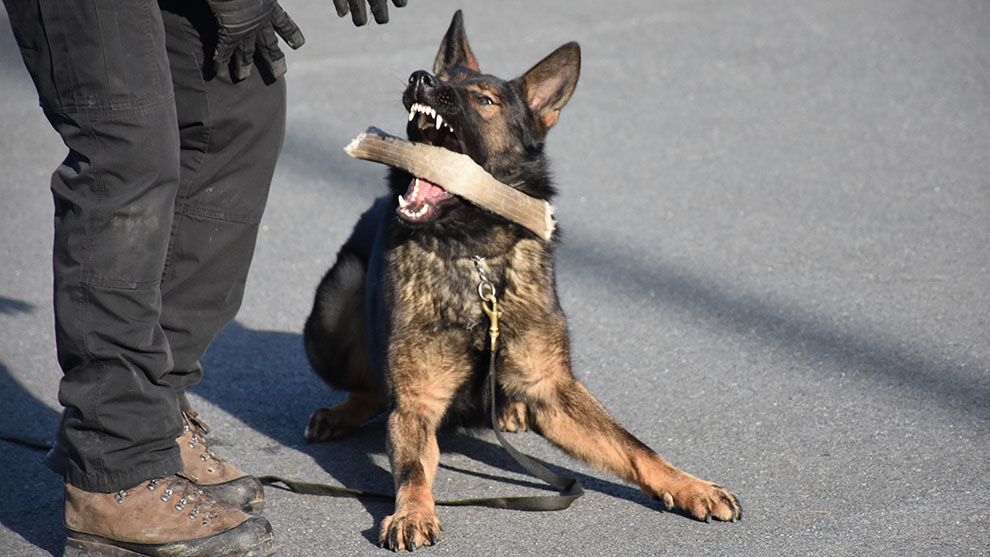
caption
Morgan catches a toy during obedience training.
caption
Morgan: The K-9 unit’s newest dog.It’s not as simple as teaching a dog to sit.
The Halifax Regional Police K-9 Unit spends eight hours a day, five days a week, training their dogs to be hard working responders. This K-9 unit is the biggest unit in Atlantic Canada, made up of nine teams and is responsible for training police dogs from all over the region.
The Signal went to a training session in Dartmouth to see how it’s done.
Police service dogs, or PSDs, Rosco, Bandit, and Morgan, practised tracking and obedience, with their handlers, constables Jason Meisner, Donnie Wadden and Phil MacDonald on Tuesday.
Both the dogs and their handlers go through training, says MacDonald who has been a HRP handler for 14 years.
Both dogs and handlers have to meet a very specific set of criteria. Police officers are required to have a minimum of five years of experience as an officer before entering a highly competitive competition to become a handler. Officers face physical and compatibility tests to see if they fit handler expectations.
Wadden, from the New Glasgow Regional Police, recently joined the K-9 unit with Bandit, his first PSD.
MacDonald said a unique test officers are asked to do is motivate a cone placed in front of them. Officers need to be able to be “silly” and encourage the dogs by raising the pitch of their voice. During this test, officers must prove their ability to motivate on an unresponsive object representing a dog.
“The dogs have to like us, wanna hang with us, chill, play,” said MacDonald.
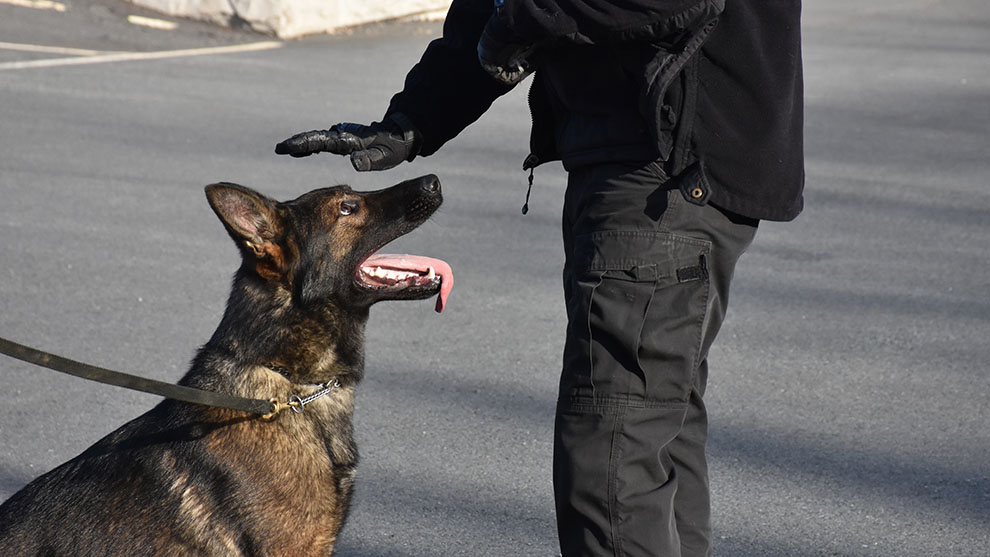
caption
Morgan listens to a command.The dogs also have to pass a series of tests.
The German shepards are specifically picked from Europe through a dealer. When they arrive, they are tested on health, courage and drive. Sometimes, dogs will be sent back don’t meet these requirements. For example, a dog can fail their tests if they are too aggressive.
“Even when they’re not successful, it’s still amazing to watch them work,” said MacDonald.
Once tests are passed by both dog and handler, a match is made and the duo spend two weeks bonding before they begin training. This bonding is crucial, as the dogs need to protect their handlers at all costs.
“He’s got to want to chill with me and nobody else,” said MacDonald.
This drive to protect is used when training the dogs to bite. MacDonald said it is used as a last resort, but the dogs are trained to bite in certain situations.
To simulate this, Wadden dressed in a hoodie and bite sleeve. Meisner then called his dog, Rosco, to chase after the simulated threat and either bite, or stop just before biting.
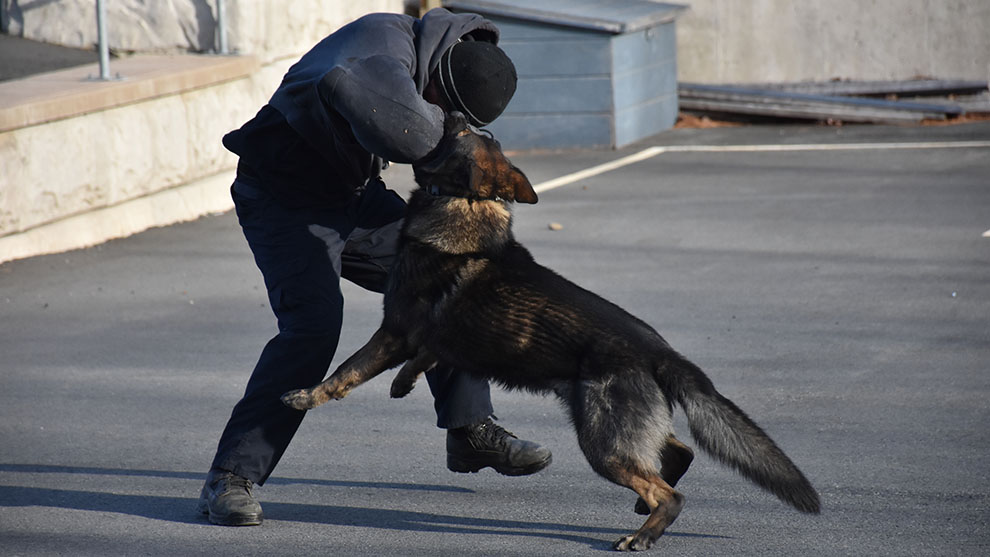
caption
Rosco bites Wadden on command.The dogs are taught to react to simple words and actions. Wadden pushed and grabbed at Meisner to simulate an assault against an officer and Rosco did not need a command in order to bite. In this case, the dogs will automatically protect the officer, without being told to.
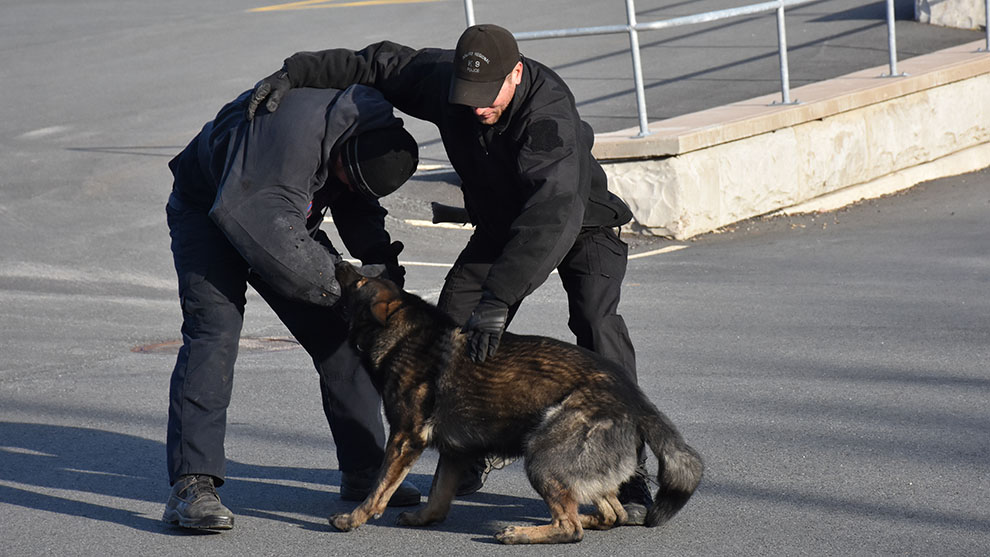
caption
Meisner and Wadden simulate a threat.“We take all the brain work out of it for the dog,” said MacDonald. “My dog will only act when I tell him to and, at the end of the day, if he bites someone he wasn’t supposed to, that’s my fault. I would never blame the dog.”
Simulations are also taught through toys. The dogs are trained to fetch and bite toys that represent suspects.
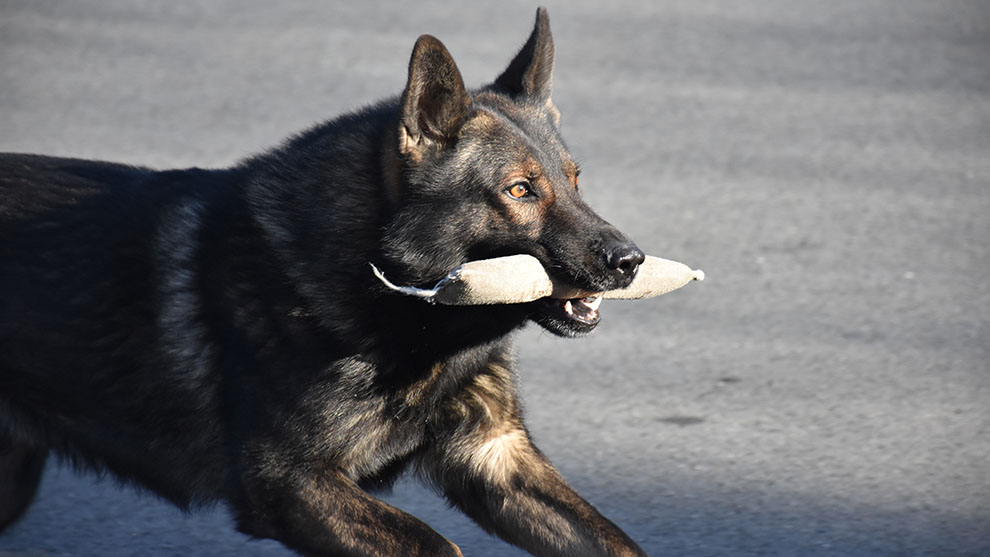
caption
Rosco fetches a toy representing a suspect.Rosco anxiously waited for Meisner to give him a command as Meisner switched the toys around and tried to play with the dog’s mind. On the proper command, Rosco had an explosive reaction, jumping forward, which was then praised by Meisner.

caption
Morgan catches a toy during obedience training.In another instance, after attempting to trick the dogs and repetitive chasing, the animals were always rewarded with playful encouragement and games of tug-of-war.
The dogs are encouraged more often than disciplined, as dogs are going to do better work, when they want to work, said MacDonald.
Meisner cheered and praised Rosco with intensity, swinging Rosco off the ground.
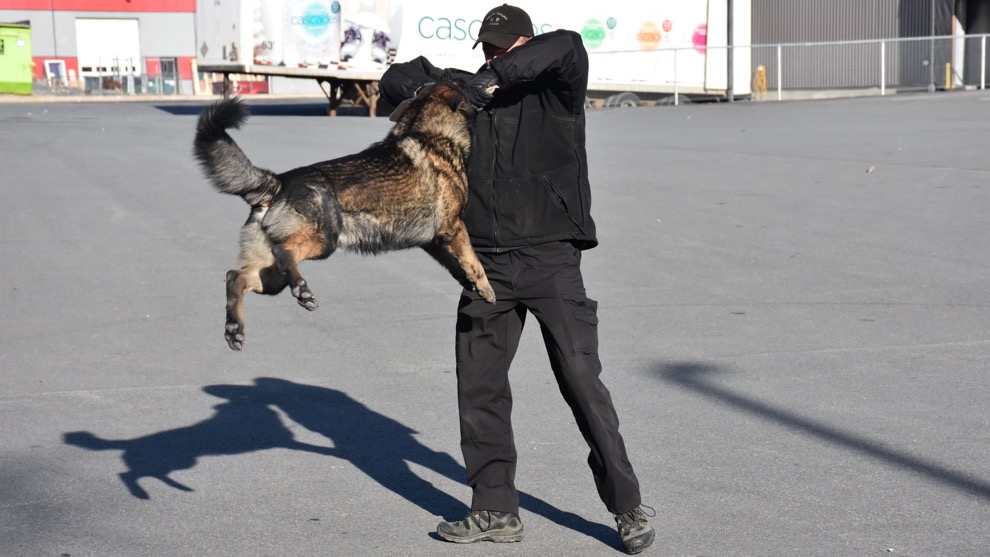
caption
Meisner praises Rosco with play.The K-9 Unit’s biggest job is tracking. The tracking technique they use, Tracking Through Drive, was developed by the RCMP. It uses the same style of tracking animals do in the wild, however they try to create a more “nose down” style, to help with tracking on pavement. This means, the dogs are encouraged to follow scent on the ground, rather than in the air.
“We try to build on what’s already there naturally,” said MacDonald.
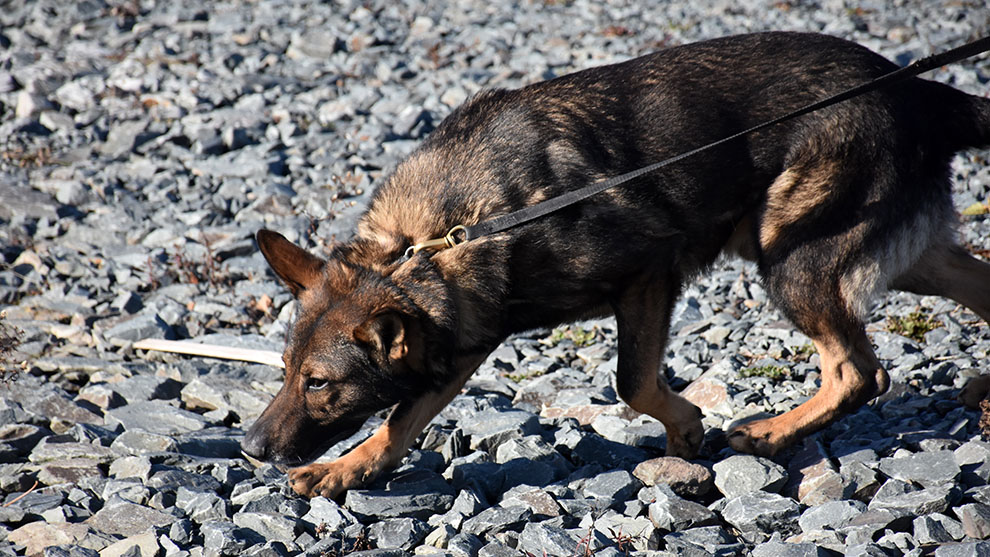
caption
Bandit searches for items with human scent.To simulate tracking a runaway suspect, Meisner ran through backyards and under fences, leaving a scent trail.
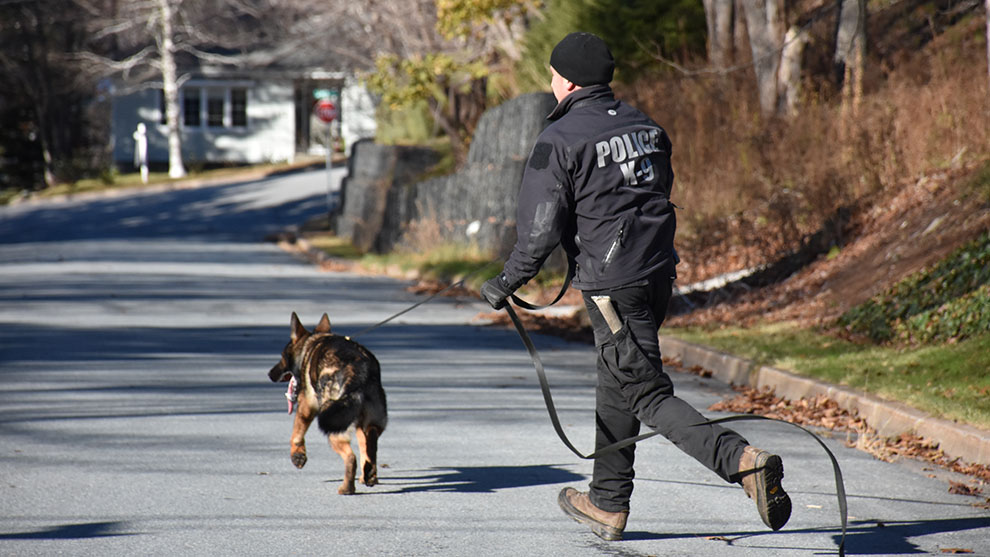
caption
MacDonald and Morgan track through a neighbourhood.MacDonald and Morgan track through a neighborhood. After approximately 30 minutes, MacDonald followed the most recent member of the K-9 Unit, Morgan, as he searched for Meisner.
Wadden said handlers can feel when their dog has picked up on a scent, and this is when trusting their partner comes into play.
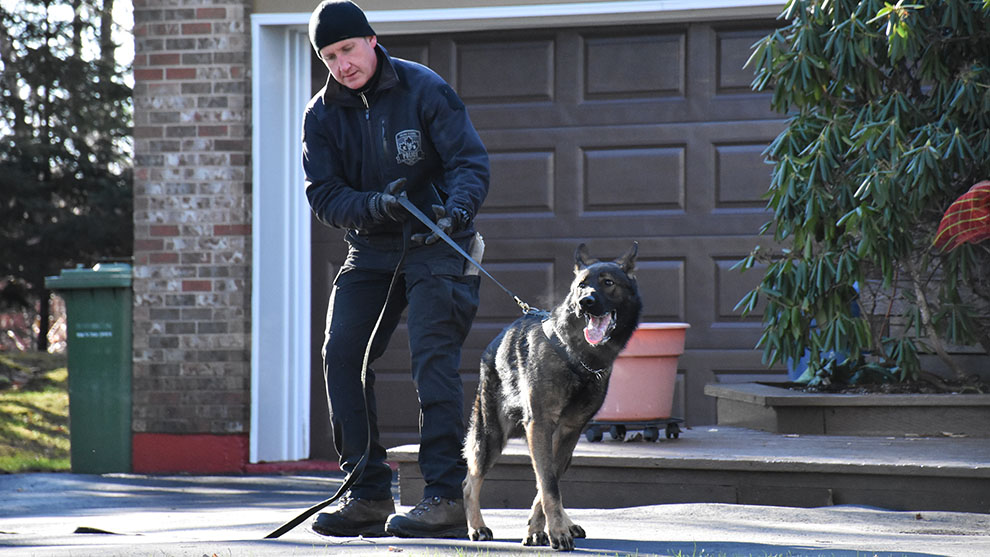
caption
MacDonald and Morgan track through a backyard.The dogs are also trained to find items that have a human scent. This training was done in a large, empty lot. Similar to tracking, Meisner went ahead of time and placed items, such as a wallet, within the area. Morgan was then brought to the area and required to find these items by smell.
Morgan then sprinted forward on the go ahead command from MacDonald, successfully finding all the items.
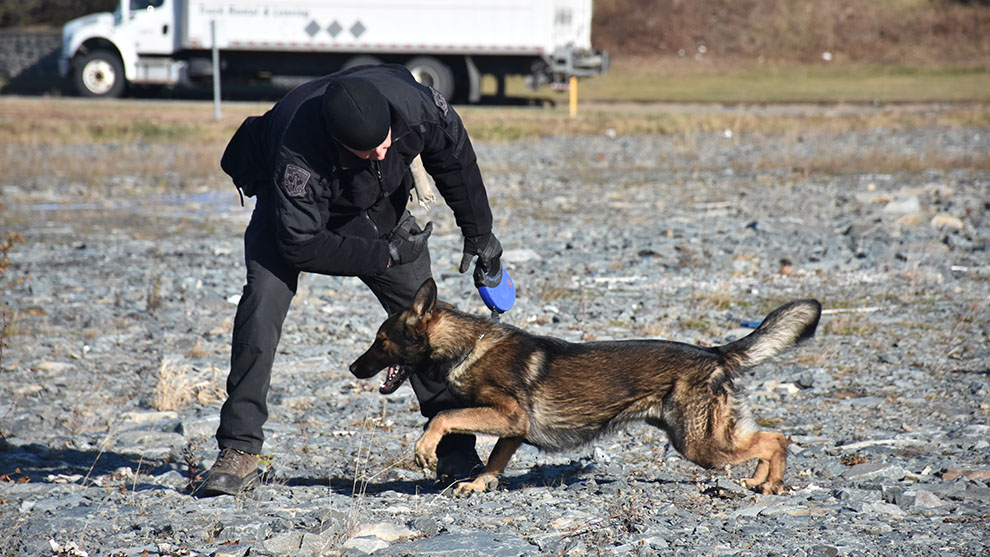
caption
Morgan sprints to find items with human scent.MacDonald described Morgan as “a big leaner, he’s still a space cadet, he’s a big kid.” You wouldn’t know he was a police dog, said MacDonald, but Morgan loves his job and would rather be tracking than anything else.
MacDonald also said the dogs have distinctly different personalities, “just like human beings.” When the handlers and dogs aren’t working, they’re friends. MacDonald referred to Morgan as “dude.”
However, once it’s time to work, it’s all focus.
From finding a five-year-old autistic boy and bringing him home, to tracking down a murderer, the dogs are made for this job.
“They’re working dogs, but to them it’s not work,” said Wadden.
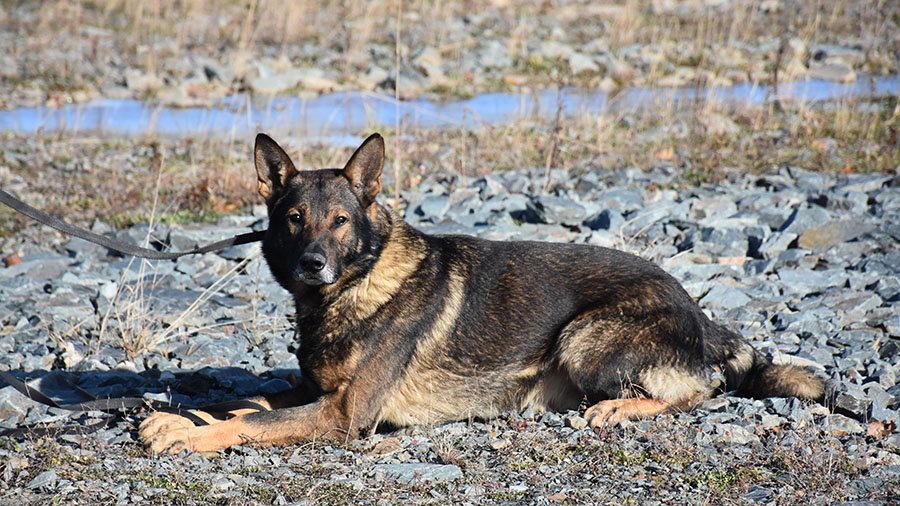

D
Donna
M
Michael Creagen